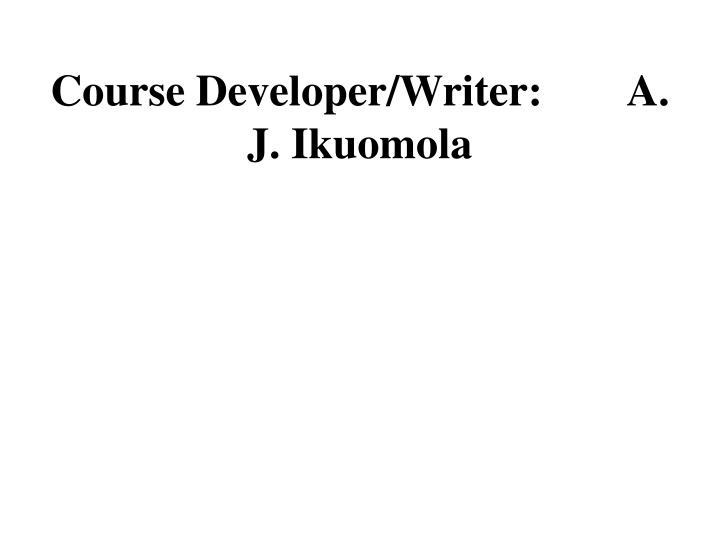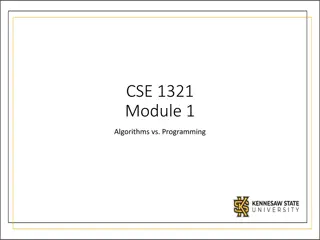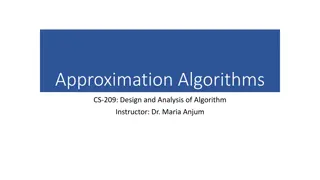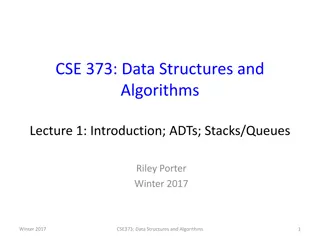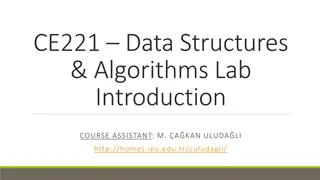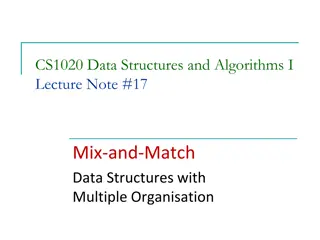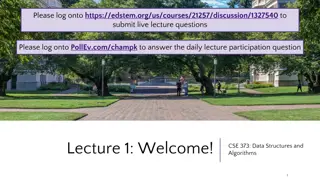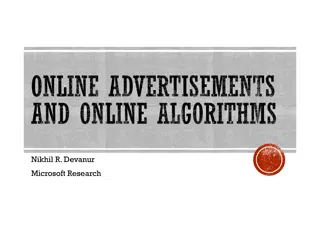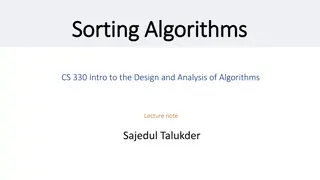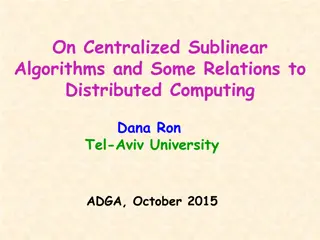Fundamentals of Data Structures and Algorithms
Explore the core concepts of data structures and algorithms, including mathematical notations, functions, summation symbols, and the dynamic nature of data. Understand the principles behind record, array, and linked data structures, as well as the volume of data involved and storage requirements. Gain insights into manipulating data structures programmatically and the ways data is utilized.
Download Presentation

Please find below an Image/Link to download the presentation.
The content on the website is provided AS IS for your information and personal use only. It may not be sold, licensed, or shared on other websites without obtaining consent from the author.If you encounter any issues during the download, it is possible that the publisher has removed the file from their server.
You are allowed to download the files provided on this website for personal or commercial use, subject to the condition that they are used lawfully. All files are the property of their respective owners.
The content on the website is provided AS IS for your information and personal use only. It may not be sold, licensed, or shared on other websites without obtaining consent from the author.
E N D
Presentation Transcript
Course Developer/Writer: J. Ikuomola A.
Department of Computer Science College of Natural Science University of Agriculture Abeokuta, Ogun State, Nigeria
UNIT 1: MATHEMATICAL NOTATION AND FUNCTION
Consider a sequence of a1, a2, a3, Then the sums
a1 + a2 + a3 + ... + an and am1+ am+1 + + an
manipulated by the program. Thus the record and array data structures are based on computing the addresses of data items with arithmetic operations; while the linked data structures are based on storing addresses of data items within the structure itself. Many data structures use both principles.
Amount of storage required by the data structure.
upon machine instructions. Examples are integer and character. Non- primitive data structures are derived data structure from the primitive data structures. Examples are structure, union and array.
homogenous data structures all the elements will be of the same type. Example is array. In heterogeneous data structure the elements are of different types. Example: structure
such data structures are known as static data structures. If the allocation of memory is at run-time then such data structures are known as Dynamic data structures. Functions such as malloc, calloc, etc. are used for run-time memory allocation.
data structure is said to be linear if its elements form a sequence or a linear list. Example, array. A non-linear data structure does not maintain any linear relationship between the elements. Example: tree.
Linear structure can be represented in a memory in 2 basic ways:
To have the linear relationship between the element represented by mean of sequential memory location. These linear structures are called ARRAY.
To have the linear relationship between the elements represented by means of points or links. These linear structures are called LINKLIST.
The following operations are normally performs on any linear structure, whether is an array or a linked list.
exactly only, so that certain items in the record may be processed. This accessing and processing is sometimes called visiting the record.
location of the record with a given key value or finding the location of all records which satisfy one or more conditions.
Inserting: adding a new record to the structure
Deleting: removing an element from the list of records from the structure.
alphabetically according to some NAME key or in numerical order according to some NUMBER key such as social security number, account number, matric number, etc.)
Merging: combining the records in two different sorted file into a single sorted file.
Data Structure Advantages Disadvantages inserts Array Quick
Ordered Array Faster Fixed size search than unsorted array Slow inserts
